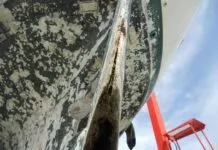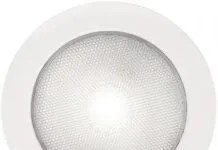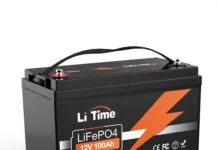
The use of glues and resins is indispensable in modern wooden and plywood boat construction. Ahead of self-building a 41-ft. Wharram Designs Narai Mk IV wooden catamaran, my husband Remy and I—amateur sailors and first-time boat builders with a desire to tread lightly on the environment—wanted to dive into the sticky business of glues and resins.
Wharram Designs wooden catamarans are today commonly built with plywood, timber, epoxy and a thin layer of glass cloth. Though more sustainable vessels than mass produced pop-out fiberglass/epoxy boats, they are still far from being environmentally and ethically benign. Once you’ve cut your ply, the next step is to saturate both sides in epoxy resin, a toxic product harmful to humans and the environment. Before we decide which epoxy and hardener to use, we wanted to explore the legacies, chemical components, effectiveness in marine environments, and, of course, eco impacts—with our “greenwashing” radar turned on—with a hope to come out the other side better informed.
The most common adhesives used in plywood boatbuilding include urea-formaldehyde, phenol-formaldehyde and melamine-formaldehyde. These adhesives offer strong bonding and water resistance, essential for use in marine environments, but they are petrochemical-based, meaning they rely on non-renewable fossil fuels. Additionally, the manufacturing process emits volatile organic compounds (VOCs), which contribute to air pollution and pose health risks to workers (Tucker, 2012). Despite meeting safety and durability standards for marine environments, these adhesives are far from environmentally friendly.
Mainstream epoxy resins meanwhile enhance the longevity of wooden vessels by making them more resistant to moisture, UV damage and general wear and tear, but they are made from synthetic chemicals derived from petrochemicals. The production of epoxy emits greenhouse gases, and the disposal of cured epoxy is problematic, as it is not biodegradable and difficult to recycle. Although some low-VOC and solvent-free epoxies are available, they still lack a fully regenerative lifecycle.
EVOLUTION OF ADHESIVES AND RESINS IN WOODEN BOATBUILDING

Traditionally, wooden boats were held together with natural fastenings such as wooden pegs or iron nails, but waterproofing and structural reinforcement were often achieved using natural resins and animal-based glues. Pine resin, tar and animal hide glue were widely used to seal and bond early wooden water craft. These adhesives, while effective, lacked the durability and water resistance required for prolonged exposure to marine environments.
The introduction of synthetic adhesives in the early 20th century revolutionized boatbuilding. The development of phenol-formaldehyde and urea-formaldehyde resins during World War II provided boatbuilders with stronger, more durable bonding agents that could withstand harsh marine conditions. These adhesives offered superior water resistance and bonding strength, which enabled the mass production of plywood and other composite materials for boatbuilding.
Epoxy resins, first introduced in the 1950s, further transformed the industry by providing an even stronger, more versatile material for waterproofing, bonding and coating wooden boats. Epoxy-based adhesives became the industry standard for bonding plywood hulls and reinforcing boat structures, offering the long-term durability that earlier natural glues could not match (Bass, 2005).
However, as the environmental impact of petrochemical-based adhesives and resins became more apparent and part of the wider public discourse in recent decades, some boatbuilders began seeking alternatives that could reduce reliance on fossil fuels and lower the carbon footprint of boat construction.
Today, there is a strong interest across the industry in bio-based glues and resins, which aim to combine the strength and durability of synthetic adhesives with more sustainable, renewable materials. But before we explore these emerging innovations, let’s better understand the popular “mainstream” adhesives and resins on the market today, with their pros, cons and environmental considerations.
MAINSTREAM RESINS AND ADHESIVES IN WOODEN BOATBUILDING
EPOXY RESIN

We use vapor masks because the epoxy gives off toxic fumes, particularly when coating large surfaces. (Photo/ Wharram Designs)
Epoxy resins are thermosetting polymers that undergo an irreversible chemical reaction when cured, creating a rigid, durable material. Epoxies are made by reacting epichlorohydrin with bisphenol-A (BPA), though alternative formulations exist. The resulting resin offers high adhesive strength, bonding well to wood and making it a popular choice for boatbuilders. The curing process involves mixing the resin with a hardener—often an amine or anhydride—which initiates cross-linking to solidify the material.
For Wharram catamarans, epoxy plays multiple critical roles. It’s used to coat plywood on both sides, enhancing moisture resistance and structural integrity. Epoxy also acts as a bonding agent in joints and is used in fillets (by mixing epoxy with fillers like silica or wood flour) to strengthen corners and distribute stress, adding stability and creating a watertight bond. Epoxy’s use in glass sheathing, where fiberglass cloth is applied over the wood and saturated with epoxy, further protects against abrasion and impact, increasing the boat’s longevity.
However, while epoxy provides critical performance benefits, its ecological and ethical footprint poses significant concerns. The synthetic hardeners used in epoxy are often 100 percent non-renewable and can contain toxic amines, posing serious health risks during application. When uncured, these chemicals can irritate the skin and respiratory system, with potential long-term health impacts for frequent users. Proper ventilation and protective equipment are essential during application, but even with precautions, epoxy can lead to occupational hazards.
Pros: Epoxy resin provides exceptional bonding strength, water resistance and durability. It’s frequently used for sheathing and coating wooden boats, which extends their longevity. Epoxy is also versatile, forming smooth, high-strength finishes that contribute to the vessel’s structural integrity.
Cons: Derived from petrochemicals, epoxy is non-renewable and harmful to the environment during both production and disposal. Cured epoxy is non-biodegradable and difficult to recycle, raising end-of-life issues like ecosystem contamination. The application process releases volatile organic compounds (VOCs), which are harmful to human health and the environment. Additionally, BPA in some epoxy formulations has raised health concerns.
Environmental and Ethical Challenges: The production of epoxy generates greenhouse gases, and the cured product remains non-biodegradable, presenting long-term disposal challenges. The hardener’s toxicity adds to ethical concerns, as prolonged exposure can impact workers’ health. Although bio-based alternatives are emerging, they often still rely on synthetic, toxic hardeners, complicating efforts to achieve true sustainability.
UREA-FORMALDEHYDE RESIN

Urea-formaldehyde is a thermosetting polymer created by condensing urea with formaldehyde. Upon curing, it forms a rigid adhesive that is widely used in plywood and particleboard but lacks water resistance, making it less suitable for marine environments.
Pros: Urea-formaldehyde is cost-effective and provides strong bonding for interior applications.
Cons: The resin emits formaldehyde, a known carcinogen, and lacks water resistance, which limits its use in exterior boatbuilding.
Environmental and Ethical Challenges: Formaldehyde emissions during production pose serious health risks for workers, contributing to poor indoor air quality. The resin’s durability in wet environments is limited, reducing its long-term sustainability in marine applications. (Tucker, 2012).
PHENOL-FORMALDEHYDE RESIN

Phenol-formaldehyde is a durable, water-resistant adhesive used in marine-grade plywood, created by reacting phenol with formaldehyde under heat. While its strength and resistance make it valuable for boatbuilders, it also brings environmental and health challenges.
Pros: Offers high water resistance and durability, ideal for marine applications.
Cons: The high-temperature curing process requires significant energy, and the formaldehyde emissions pose health risks.
Environmental and Ethical Challenges: Phenol-formaldehyde emits VOCs and formaldehyde during production, contributing to air pollution. The energy-intensive curing process increases its carbon footprint, and formaldehyde exposure can lead to health risks for workers. The resin’s non-biodegradability presents challenges for waste management at the end of its life. (Tucker, 2012).
EMERGING BIO RESINS
With the push for sustainable boatbuilding, a variety of bio-based resins are being marketed as eco-friendlier alternatives to traditional petroleum-based resins. However, the environmental and ethical implications of these resins vary based on their bio-content, sourcing and production process. While bio-resins are promising, most still require synthetic hardeners, which can introduce toxicity and reduce the overall eco-benefits. Here’s a general overview of the emerging bio-resins I found on the market, including their sources, benefits and challenges.
PLANT OIL-BASED BIO-RESINS
Bio-resins derived from plant oils, such as soy, cashew nutshell liquid (CNSL), sunflower and pine oil, replace a portion of the petrochemical content with renewable sources. These oils are chemically modified to be compatible with epoxy structures, offering a more eco-conscious choice for wooden boatbuilders. Typical bio-content in these resins ranges from 30 to 60 percent, depending on the formulation.
Pros: Partially renewable and can lower volatile organic compound (VOC) emissions compared to conventional epoxies. Some formulations offer moderate durability and bonding strength, suitable for certain boatbuilding applications.
Cons: Limited bio-content means these resins still rely significantly on petrochemicals. The synthetic hardener component remains fully non-renewable and introduces toxicity, limiting the overall sustainability of these products. Additionally, the cured resin is non-biodegradable.
Environmental and Ethical Challenges: The sourcing of plant oils, especially from crops like soy, can lead to deforestation, loss of biodiversity, and agricultural strain. Sustainable sourcing practices are essential to prevent these impacts. The chemical modification process required to make these oils compatible with epoxy systems is also energy-intensive, further reducing their environmental benefit.
PINE OIL-BASED RESINS
Resins based on pine oil leverage by-products of the forestry industry, which makes them an appealing option in terms of using waste materials rather than competing with food sources. Pine resin is chemically modified to improve its adhesive qualities and resistance to degradation, making it potentially suitable for certain marine applications.
Pros: Derived from renewable forestry by-products, reducing reliance on agricultural resources. Can lower VOC emissions and offers moderate water resistance, suitable for some wooden boat applications.
Cons: Generally has lower impact resistance than traditional petrochemical epoxies and may require synthetic additives to enhance performance. Pine resin-based resins can also be more expensive and harder to source.
Environmental and Ethical Challenges: If pine oil is not sustainably harvested, it can harm forest ecosystems. Moreover, the chemical process to convert pine resin into a stable adhesive is energy-intensive, raising questions about its overall sustainability.
CASHEW NUT SHELL LIQUID (CNSL) RESINS
Derived from the shells of cashew nuts, CNSL resins make use of an agricultural by-product, which can be more sustainable compared to primary crop-based resins. These resins offer good UV resistance and adhesive qualities, making them viable for marine applications.
Pros: CNSL resins have strong shear strength, elasticity and UV resistance, which are advantageous in marine settings.
Cons: Often mixed with synthetic components to enhance water resistance, limiting the overall bio-content. Availability may be restricted to areas where cashew cultivation is prevalent.
Environmental and Ethical Challenges: While CNSL is a by-product, the environmental footprint of cashew production can be significant, particularly if it contributes to deforestation or water strain. Additionally, converting CNSL into resins requires chemical processing, which adds to its environmental impact.
SOY-BASED BIO-RESINS
Soy-based resins are derived from soybean oil, which is renewable and widely available. However, to achieve the performance needed for boatbuilding, soy-based resins often require synthetic additives or hardeners, especially for durability and water resistance.
Pros: Soy-based resins are generally accessible and have low VOC emissions. They offer decent adhesive properties when blended with other materials, making them moderately suitable for specific applications.
Cons: Soy-based resins struggle with water resistance and durability in marine environments. They typically require synthetic components to meet marine-grade standards, limiting their bio-content and sustainability.
Environmental and Ethical Challenges: Large-scale soy farming is linked to deforestation, particularly in ecologically sensitive regions such as the Amazon. Sustainable and responsible sourcing is critical to mitigate these impacts. Additionally, extensive pesticide use in soy farming can harm ecosystems, which complicates the ethical considerations around soy-based resins.
LIGNIN-BASED BIO-RESINS
Lignin, a natural polymer found in plant cell walls and a by-product of the paper industry, is being explored as a bio-resin option due to its abundance and potential affordability. Lignin-based resins are still in development, but they hold promise as a renewable alternative.
Pros: Lignin is an abundant, renewable material, and using it as a resin base could provide a cost-effective, sustainable alternative to petrochemical-based resins.
Cons: Limited testing in marine environments means that lignin-based resins are not yet widely available for boatbuilding applications. They may also require additional chemical processing to achieve the necessary adhesive and water-resistant properties.
Environmental and Ethical Challenges: The environmental benefits of lignin-based resins depend on responsible sourcing, especially if the lignin is obtained from unsustainably managed forests. Additionally, the chemical processing required to make lignin suitable for resin applications is energy-intensive, which may offset some of its eco-friendly attributes.
BIO-BASED EPOXIES

Bio-based epoxies are designed to reduce reliance on fossil fuels by incorporating renewable resources such as plant oils or agricultural by-products. However, while this sounds promising, the synthetic hardeners used in these formulations often remain non-renewable and toxic, compromising the overall sustainability of these “bio” options. I waded through the claims and marketing surrounding bio-based epoxies, often encountering what felt like extensive greenwashing.
Most bio epoxies I reviewed contained only a small percentage of actual bio content, despite being heavily marketed as “green” alternatives. This raises concerns about consumer misperception, with many believing they’re paying more for a product that is both environmentally friendly and safer for human health, when in reality, the product may not live up to these promises.
Through contacts in the surfboard manufacturing industry, I was eventually introduced to a 100 percent bio-resin formula that is being marketed as BPA-free. Curious but cautious, I met with Sean Steed, CEO of South Australian startup Change Climate Bio-Epoxy. Sean explained that their resin, made with a glycerol (glycerine) core derived from sustainable biofuel production, is certified BPA-free, has a low odor and zero emissions in its Part A resin. Though their product has yet to be tested on large wooden catamarans (should we be the first to try?!), it has shown promising results in scientific testing, applications in the building industry and in marine sports like surfing, according to case studies and papers shared by the company.
But I had to ask the critical question about Part B—the hardener. Isn’t that the component that typically remains synthetic, and once combined with Part A, results in a final epoxy that is potentially hazardous to marine environments and is not biodegradable?
Isophorone diamine (IPDA) is a commonly used curing agent or hardener in epoxy systems. It’s part of the family of amine-based curing agents, which are essential for cross-linking the epoxy resin (Part A) to create a hard, durable, thermoset material. IPDA is a cycloaliphatic amine, meaning it has a cyclic (ring-shaped) structure, which generally provides cured epoxies with improved mechanical strength, chemical resistance, and weather resistance.
Here are some key details about IPDA and its role in epoxy systems:
BIODEGRADABILITY

IPDA itself is not considered biodegradable. However, when used in specific formulations and blended with certain bio-based resins, it may contribute to a partially degradable or environmentally friendlier epoxy system. Some manufacturers claim that, under certain environmental conditions (such as exposure to UV light, moisture or microorganisms), epoxies with bio-based resins and specific hardeners like IPDA may exhibit partial degradation over an extended period.
It’s important to note that “biodegradable” in the context of epoxy may not mean the same as compostable or fully environmentally benign. The degradation may be slow and could lead to the breakdown of the polymer into smaller particles rather than complete mineralization into water, carbon dioxide and biomass.
ENVIRONMENTAL IMPACT AND TOXICITY
Like many amine hardeners, IPDA can be toxic and poses health risks. It can cause skin and eye irritation, respiratory issues and is harmful if inhaled or ingested. Proper handling with protective equipment is necessary.
IPDA also has environmental impacts. While it’s useful in producing durable and chemically resistant coatings, which prolong the lifespan of epoxy-coated materials, its toxicity and persistence in the environment pose challenges for disposal and potential eco-toxicity.
PROPERTIES OF IPDA-CURED EPOXIES

IPDA-cured epoxies are highly durable and resistant to a variety of chemicals, making them ideal for marine and industrial applications. The rigid, cross-linked structure created by IPDA enhances the mechanical strength of the epoxy, making it useful in applications requiring toughness. IPDA also improves UV resistance compared to some other amine hardeners, which is beneficial in outdoor applications. However, it doesn’t fully prevent UV degradation, and epoxy surfaces still tend to yellow over time without additional UV stabilizers or coatings (unless—as Sean informs me—they are BPA free, as it’s the bisphenol A-based resins are vulnerable to UV damage over time).
BIODEGRADATION CLAIMS AND MARKET PERSPECTIVE
IPDA-cured epoxy system might biodegrade over time depending on the bio-content of Part A (the resin) and the environmental conditions in which the cured product is disposed of. Biodegradation, if it occurs, is usually very slow and not comparable to the degradation of fully biodegradable materials like wood or natural fibers.
Some companies market “bio-epoxies” by emphasizing the bio-based percentage in the resin portion (Part A). However, because the hardener (Part B) is often synthetic and can be toxic (as with IPDA), these systems may not fully align with a circular economy or regenerative design.
I pressed Sean on this, and to his credit, he was completely transparent. He explained the Part B hardener they use, though still quite toxic (you don’t want to sniff it or get it on your skin at all, he tells me), provides a perfect bond with nothing hanging off the molecules. This means that if it ultimately ends up in landfill, the product won’t leach, and it will eventually break down with reduced toxicity concerns.
But what sets Change Climate apart is their development of BYOXY Bio-Epoxy, which Sean proudly described as the world’s only patented bisphenol-free epoxy system. Unlike traditional epoxies and partially bio-based sap resins, BYOXY contains no known carcinogens, while maintaining the high-performance standards needed for marine and industrial applications. The resin’s Part A has been certified to contain 100 percent bio-based content (ASTM-6866-D), derived from glycerol produced through sustainable biofuel processes.
Even more intriguing is their recent progress in hardener technology. Change Climate has launched a Deep-Pour casting system with a 100 percent bio-based Part B, and their 2-part coating resins now utilize a hardener with 70 percent bio-content. Perhaps the most groundbreaking, though, is their ongoing work on a non-toxic, recyclable 2-part resin system. This system allows for the reverse engineering of the epoxy bond, successfully trialed with flax textile bio-composites. Sean shared case studies showing that textiles remain undamaged during recycling, enabling reuse, while the dissolved epoxy forms high-strength granules suitable as uniform fillers in future projects.
This innovation presents a potential step forward in addressing the end-of-life challenges faced by the resin industry, shifting the narrative from “landfill-bound” to a more circular, reusable model. Of course, scaling such solutions to larger marine applications, like a wooden catamaran, remains to be seen—but the promise is there, and I’m keen to test it out.
CHALLENGES AND THE PATH FORWARD

Emerging bio-resins provide promising alternatives to traditional petrochemical-based resins though they still have limitations, especially in terms of performance in demanding marine environments. Additionally, the reliance on synthetic hardeners in most bio-epoxy systems raises significant environmental and health concerns, as these hardeners typically contain toxic chemicals and minimal—if any—bio-content.
The development of fully bio-based hardeners remains a major hurdle for creating truly sustainable resin systems. Furthermore, transparent labeling and lifecycle assessments are essential to help consumers make informed decisions, particularly as greenwashing remains a risk with many “bio” or “eco” labeled products.
The shift to bio-resins represents progress and we must continue to advocate the industry towards this direction, but the journey to a genuinely sustainable and ultimately, regenerative, resin solution for marine applications is ongoing. The balance between performance, renewability and environmental impact is crucial in guiding future innovations in our industry.
END OF LIFE DISPOSAL
One of the most significant challenges in wooden boatbuilding is the disposal of resin-coated wood. Epoxy-saturated wood, commonly used in Wharram designs, is non-biodegradable due to the permanent bonding of synthetic resin to organic wood. This combination renders the material unrecyclable, contributing to long-term environmental impact as it accumulates in landfills.
Incinerating resin-coated wood releases toxic fumes, while conventional landfilling does little to reduce its environmental footprint, given the extended decomposition time of synthetic materials. As such, constructing a wooden boat with longevity in mind is critical, as is the need for creative and innovative ideas for reusing the wooden components when these boats reach their end-of-life.
Bottom line: As the boatbuilding industry seeks more sustainable options, transparency about bio-content percentages, toxicity and lifecycle impacts is essential. For wooden boatbuilders and environmentally conscious consumers, the decision to use epoxy or bio-based alternatives must weigh performance advantages and longevity against the broader ecological and health implications.
REFERENCES
- Bass, B. (2005). Marine plywood and its evolution in boatbuilding. Marine Industries Press.
- Change Climate Bio Epoxy (CCBE). (n.d.). High bio-content epoxies for reduced environmental impact in marine applications.
- Corigliano, P., Crupi, V., Bertagna, S., & Marinò, A. (2021). Bio-based adhesives for wooden boatbuilding. Journal of Marine Science and Engineering, 9(1), 28. https://doi.org/10.3390/jmse9010028
- Entropy Resins. (n.d.). Sustainable epoxy resins for eco-conscious building and manufacturing. Retrieved from https://www.entropyresins.com
- Gonçalves, P., Gil, F., & Marques, E. A. S. (2021). Environmental impacts and performance of bio-based epoxy resins for marine applications. Materials, 14(15), 4191. https://doi.org/10.3390/ma14154191
- Tucker, A. M. (2012). Advances in marine composite materials. Woodhead Publishing.
- Wang, J., Huang, S., Zhao, Y., Liu, Y., & Shi, Q. (2019). Recent advances in bio-based adhesives for sustainable wood bonding: A review. Journal of Polymers and the Environment, 27(1), 228–249.


































Why is Practical Sailing hosting this content? It is written by an amateur builder non-sailor who by their own admission does not know what they are talking about. While the academic research is impeccable, it is presenting solutions that are purely theoretical and seriously biased by the writer’s wants, needs and budget. I am especially concerned with your advocation of non-proven epoxy formulations in boat building; leave it with the surfboards and check back in 15-20 years. While a wharram cat may not be highly loaded, it is folly to envision using unproven epoxy on a blue water craft. The author is welcome to do anything they like, but Practical Sailor needs to be more responsible with what you are presenting to the public. Please. If I wanted crap, unvetted content I would watch youtube channels of sailing wannabes.
To the author: Reduce, Reuse, Recycle. If you are truly concerned with your impact, find an old boat and fix it up; there are thousands to chose from. Don’t greenwash your choices as sustainable and good- just admit this is what you want to do and do it without justifying it to all of us. Or get a youtube channel like all the other sailing wannabes.
Agree 100% except I do like to hear about industry progress and new technology.
A surfboard which is in the water and sun for several hours at a time is not a sailboat weeks away from shore. Also, fiberglass and resin if not reused as the original boat can at least be ground up for concrete additives.
I’ll second/third the above. And what are the saw horses made of supporting the eco/green surfboards?
Interesting article, I have bought and used Climate Change epoxy. In my experimental use I found it to be an excellent product with good UV properties that other epoxies don’t have. The down sides are it is twice the price and the mixing ratio complex.
Now in this world the inescapable fact is economics govern everything including climate change and our reaction to it. People building wood epoxy yachts such as Wharrams are not wealthy high end boat builders, so fancy priced epoxy and materials such as flax and other natural fibers are not going to gain any traction in the wood epoxy market. As a yacht designer and boat builder I keep breast of these developments of materials but as they stand I could build a 40′ multihull from carbon fibre and regular epoxy cheaper than a wood epoxy one using Climate Change epoxy and flax cloth. Not only cheaper it would be lighter and thus use less materials so it could be argued it would have less environmental impact. Though it still would still not be economical for most Wharram builders.